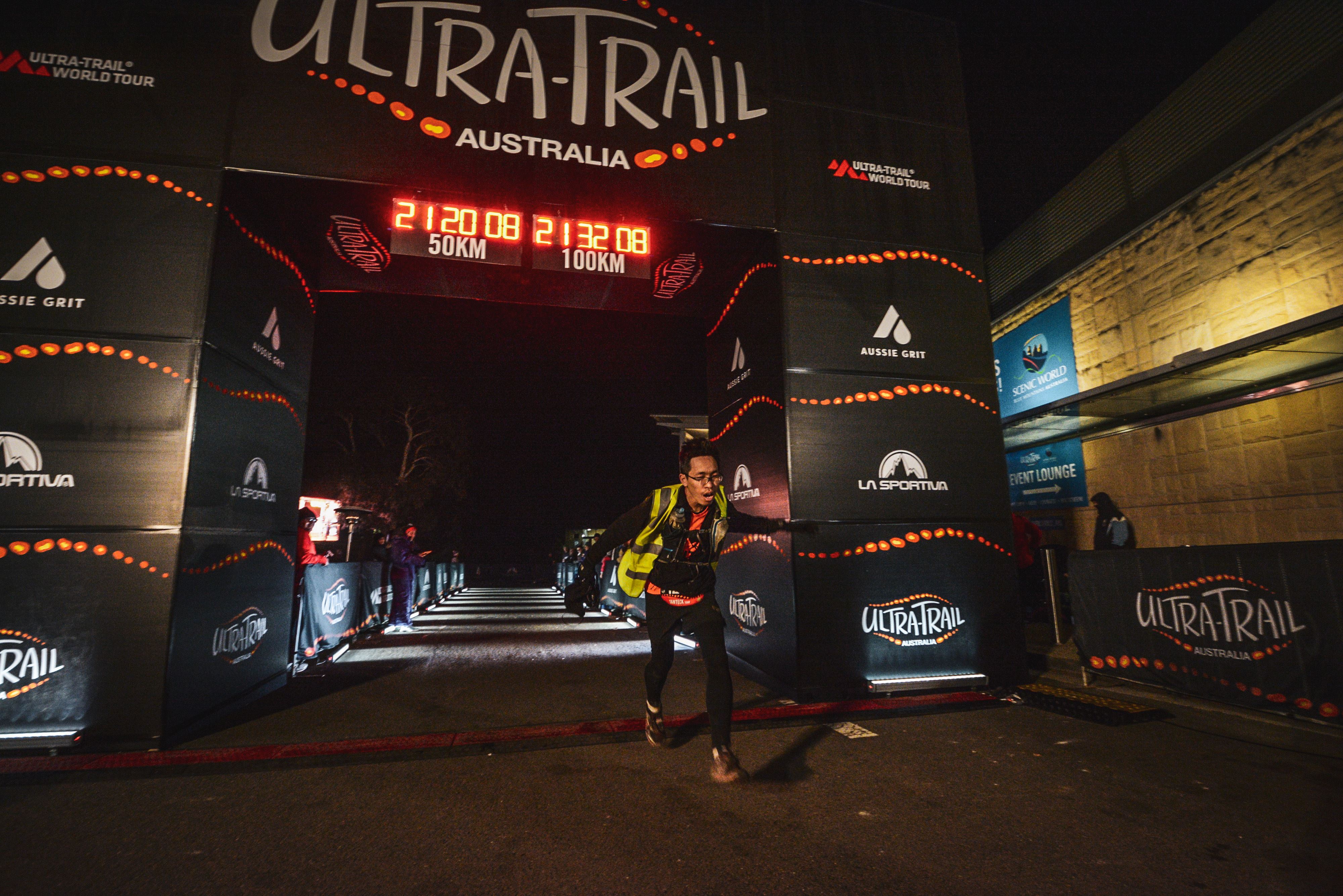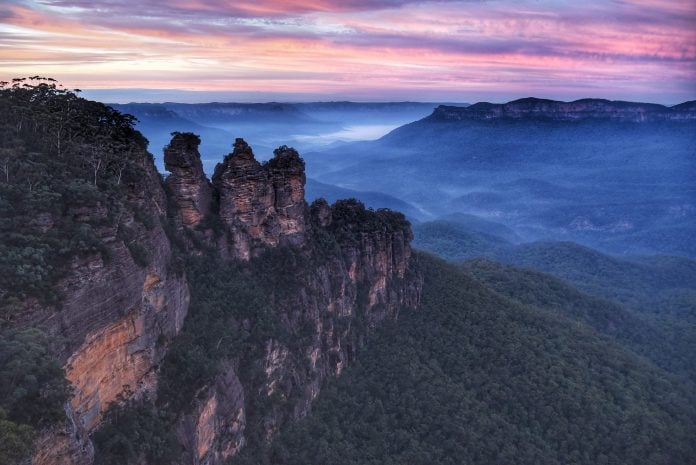IT is already close to 6am and I shouldn’t be deciding right now whether to wear my thermal top. But you usually do in a cold-weather country, a part of my subconsciousness must have been debating with me.
That’s a good point: I did so for past races in Hong Kong and Japan, and now here in Katoomba within the Blue Mountains region of Australia’s New South Wales, it’s a logical choice for a temperature of around 10°C.
Then I consider the perils of getting my base layer soaked in sweat during the daytime of the race, risking hypothermia in the cold night due to wet clothing. The top finally gets sealed in a zip lock bag and kept in my hydration pack.
My concern, though, is more than just about a piece of fabric. With two hours before the start of my wave for the 100km category of Ultra-Trail Australia (UTA), I wonder if I am prepared for this odyssey.
Big deal, which ultramarathoner never have to grapple with his trepidation prior to gun off? But I wasn’t exactly the most methodical of runners, and unlike most of my peers, had almost never gone to Bukit Timah Hill in the last seven months-plus to prepare for a trail race. I life-hacked my training up, running most distances on flat ground and climbing for hours at a 19-floor HDB block near my home.
I expect I could still finish the race but I wonder if I can do so under 20 hours – for that, UTA participants can still get a bronze buckle, if they are not able to complete under 14 hours (silver) or, better still, win the race (gold).
I’m neither going to run any faster or beat all my competitors, so the goal of obtaining the bronze buckle is somewhat realistic.
______________________________
WE are flagged off at 7.54am at Scenic World Blue tourist center after the previous six waves of faster runners have been launched in the past 94 minutes. Almost immediately, we take a left turn to Cliff Drive, passing by suburban houses before u-turning after about 2km to run back the same stretch and through a line of cheering supporters on both sides of the lane.
Before long, we enter a park and head towards Katoomba Cascades, moving on the Prince Henry Cliff trail path en route to Furber Steps which is just at the doorstep of Scenic World facility.
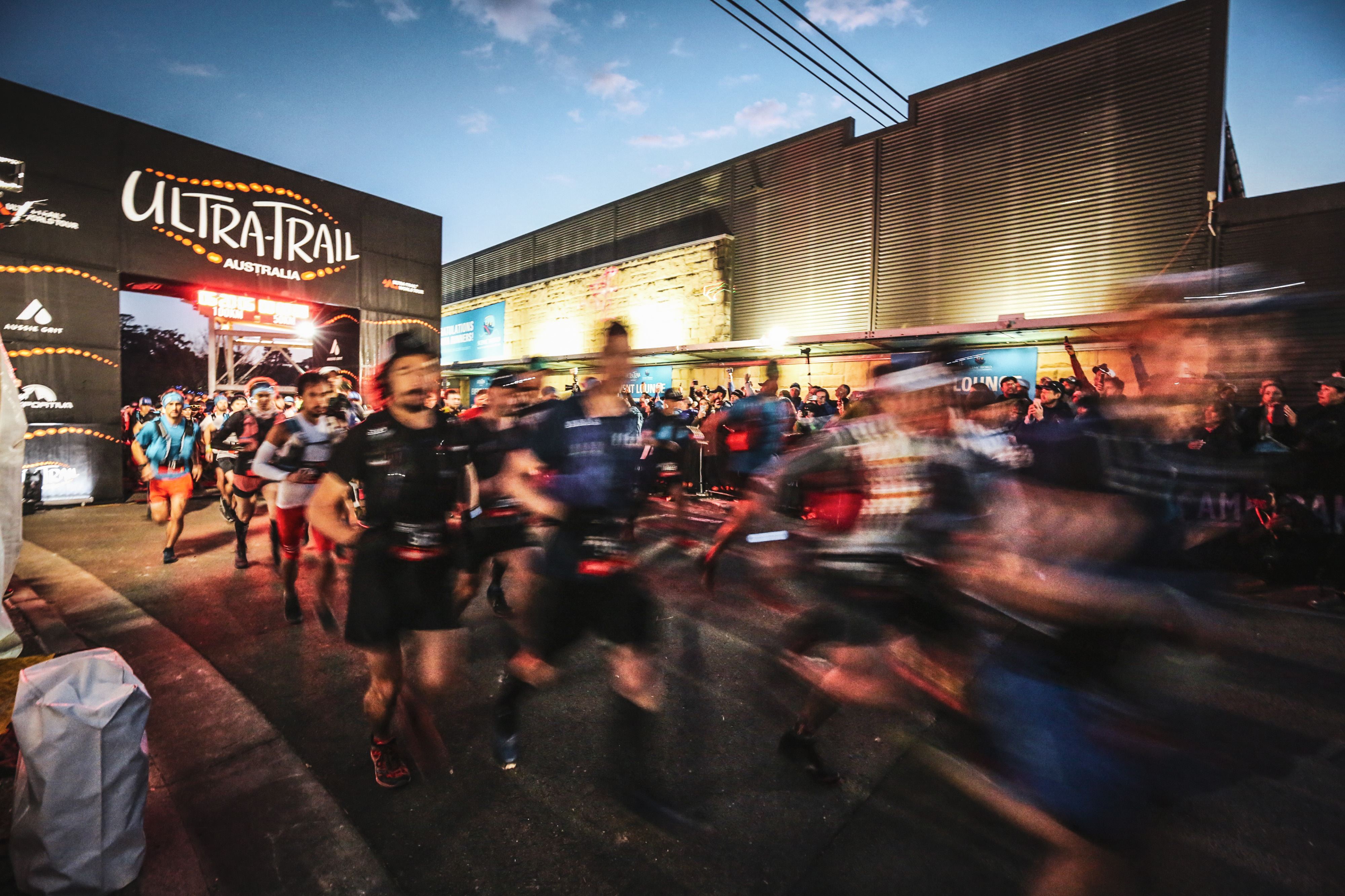
Until we reach the 10km mark, the terrain, with its relatively gentle elevations, has been rather kind to our legs. While the rocky sections of Federal Pass track require some cautious footing, I’m otherwise feeling lighthearted as Aussie runners – with their famous, laid-back approach to life – chit chat with each other.
The first test of mettle comes at about 10km, at what’s euphemistically called the Golden Stairs – a very steep 200m climb. After more than an hour since gun off, my body is rudely awakened by this intense, quad-burning push to the first checkpoint, supplemented by a courtesy bump on the head by a boulder on the trail slope.
At 9.36am, I quickly put that episode behind, having arrived at Checkpoint 1 in a still-fresh condition.
______________________________
AS soon as I depart the checkpoint, I begin to struggle to resume my momentum, my body feeling like a troubled car engine starting up. I switch to doing a little more walking at the Narrow Neck Plateau Trail and hope to conserve and shore up some energy for a decently-paced run.
After all, there lies a distance of a near-half marathon 20.2km between Checkpoint 1 and 2. It is not good timing to hit the wall this early.
Lovein Heng, a petite compatriot from Singapore, catches up, exchanges pleasantries with me and gets ahead with her consistent pacing. As it was in some of my past paces, I have found my hare to pace with. Soon, we would be inadvertently overtaking each other several times as we adjust our speed to the changing elevation.
By the time my body overcomes its little turbulence, the Blue Mountains region starts to reveal its signature vista of mountains and escarpments blanketed by verdant swathes of forests. Although an avid photographer myself, I have chosen, in recent times, not to be distracted by my shutterbug tendencies during a race and instead enjoy the spectacle without yanking out my iPhone.
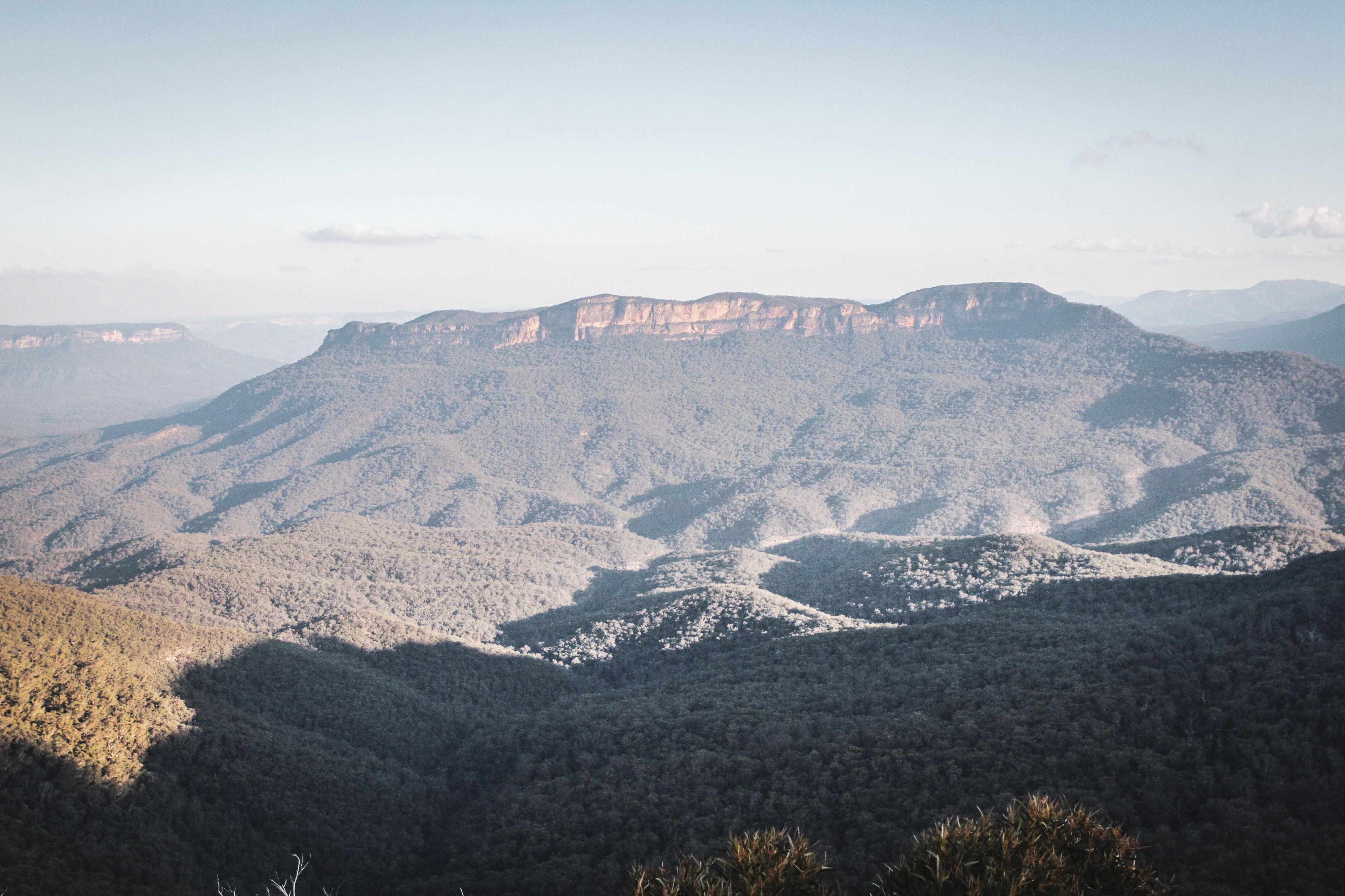
At the end of the track, we clamber down between boulders, with one runner being seized by a cramp. A local racer, whom I earlier talked to while running, helps prop the man against a boulder before lifting and stretching his affected leg.
The rest of us descend to Tarros Ladders, where we join a queue of people waiting to climb steel ladders to the base. “I just want to be sure that I’m not winning [the race],” one lady in the queue jokes with a volunteer taking care of the ladders.
From there, we take an undulating route through a forest at Tarros Ladders Medlow Gap Walking Track. Via W7a Mitchells Creek Trail, we go down smoothly on Bellbird Ridge Firetrail and reach Checkpoint 2 – Dunphys Campground at the 31.6km mark.
______________________________
BY the early afternoon, I continue through the countryside of private land and on course to the foot of Ironpot Mountain. There, patience is the key – in a laborious manner, we navigate up a slope which rises from 600m+ to close to 800m within a span of around a kilometer.
As we are about to crest Ironpot Ridge, we are cheered by an elderly female volunteer seated on a field chair.
Reaching the top of the ridge, we meet three Indigenous Australian men, one of them blowing a didgeridoo windpipe. The solemn drone emitting from that instrument evokes a sense of peace that exists between man and nature; and here we are now, respectfully enjoying the trails in occasionally painful moments.
We move carefully along a narrow neck of raised rocks on the ridge and shortly turn around to go back the same route. This time, we head down a different path, pounding one of those precipitous slopes that demands ninja footing. Feeling like skiing, the descent is one of the fun parts of the race so far.
It is not so delightful after that – following what’s too hard a run down a gentle, grassy declivity, the wall strikes. Almost suddenly, I’m drained of energy, my pace reduced to a tired walk in a matter of minutes.
Lovein has passed me by then, but now I’m coping with a bad patch which feels more overwhelming than anything I experienced before. I try to remedy it with a food bar but my body refuses to up the tempo.
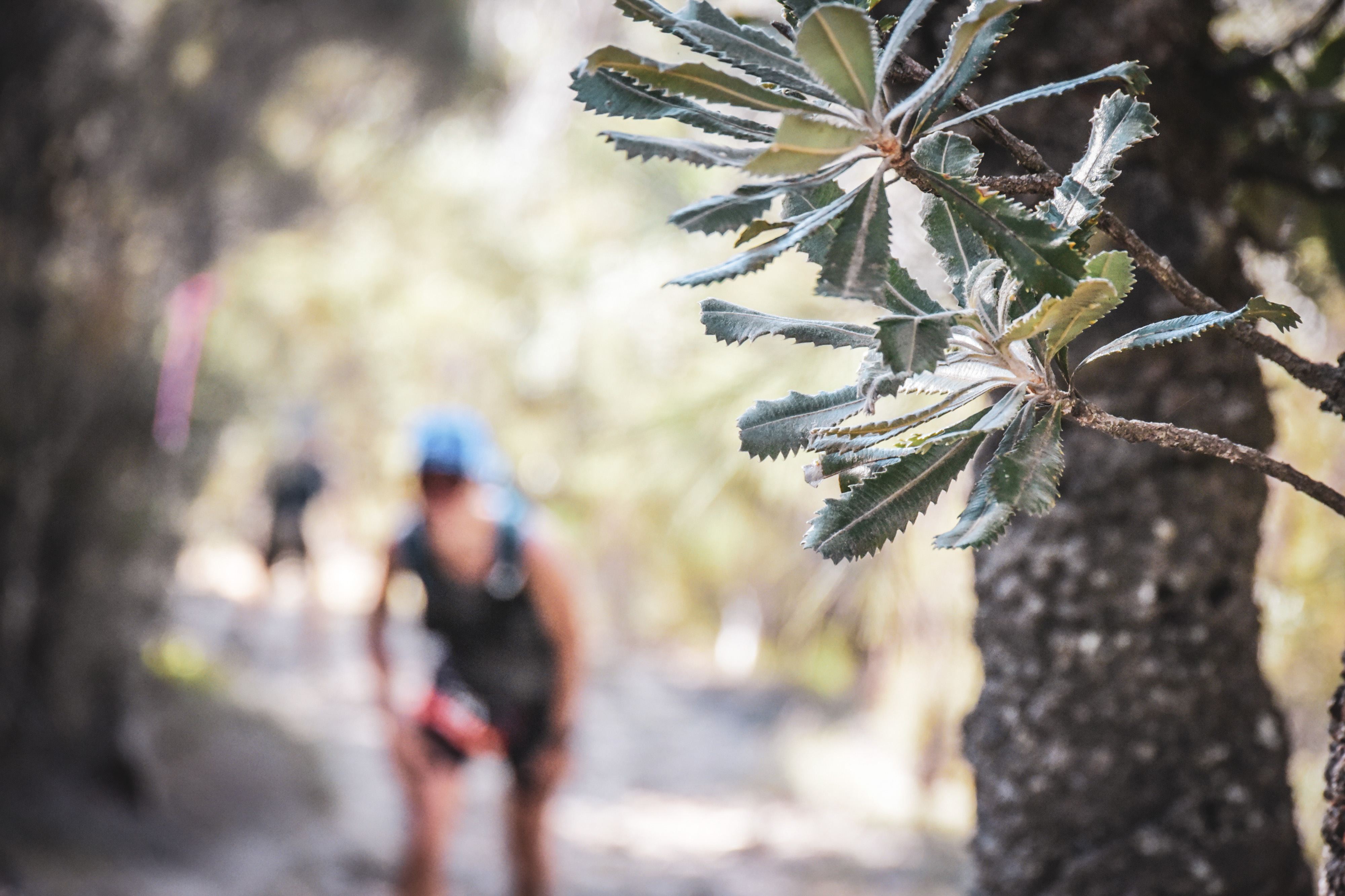
It is now about 8km left of the 14.4km distance between the last checkpoint to the next at Six Foot Track (46km). A slow climb up Megalong Road takes us on a forest trail path and through a plain where farms or ranches of sorts are situated.
Every few minutes, a runner would run past me as it seems more so that I’m left further in the rear.
At this point, it’s difficult to feel any hope that I could finish the race. I wonder about the high possibility of a DNF, the subsequent wasted effort after having undergone months of training coupled with other life challenges, and the post-race shame. By the time I reach the next checkpoint, I assume I will probably come after the cut-off time.
That pessimism aside, the friendliness of the Aussie trailer runners does not go unnoticed. Seeing my weakened state, many of them ask about my well-being as they overtake, expressing the kind of community-spirited care that I did not (or would not have) experience in other races. If I fail this time, at least this compassion is something good to remember from UTA.
Nevertheless, there is some drive in me to just fight through the wall.
Making a right turn off Megalong Road, I advance to a ‘surprise’ mandatory items inspection booth – where the volunteers check runners for a mobile phone in their possession – and then head to Checkpoint 3 which is at a field.
______________________________
THE sun is starting to set at 4-plus in the afternoon as the weather begins to chill. The break at Checkpoint 3 is much needed for me to gradually put the idea of a DNF behind.
A Coke fill-up in my soft flask and a dress-up in my thermal top, and I’m ready to venture into the coming night. By then, I have come across a few people whom I saw in the morning, including the guy who helped another runner with his cramp and a Japanese couple.
What matters now is that I’m regaining my morale. “Yeah, man,” I holler at a cheering volunteer and exit the checkpoint.
At 11.3km, the distance from Checkpoint 3 to Checkpoint 4 at Katoomba Aquatic Centre (57.3km) is the shortest between UTA checkpoints so far. With the darkness slowly closing in, I switch on my headlamp just as I’m entering a narrow trail through the forest at Six Foot Track.
Soon, we will embark on an arduous climb that rises steeply to around 1,000m within about 5km. The only consolation I can find in this grinder is that the trail and steps here are not too rugged and technical – unlike those at Malaysia’s Cameroon Highlands Ultra where climbing really means scaling the slopes with both feet and hands.
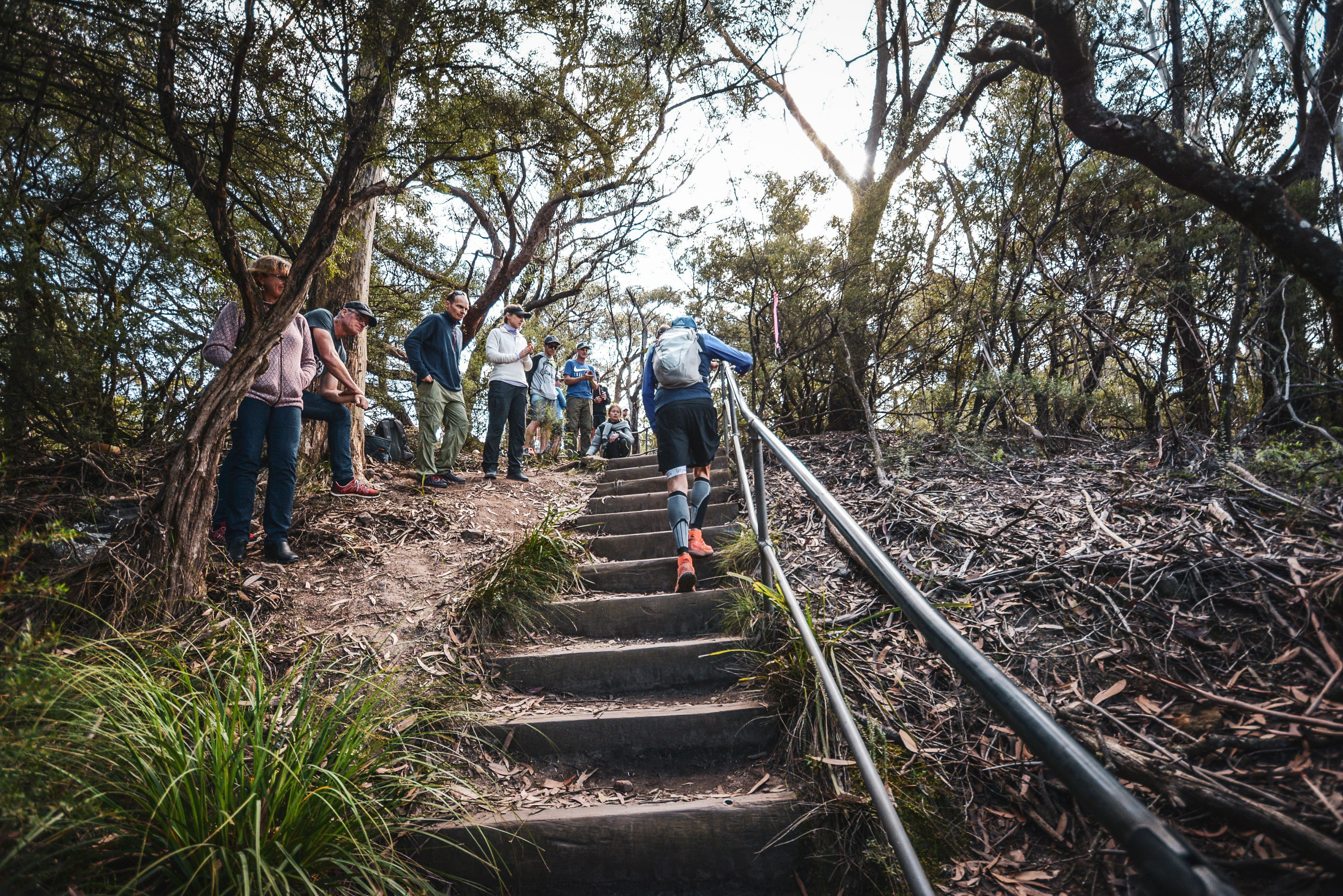
It gets easier after we pass that hurdle. It’s all trail till we hit a road, but not before I catch up with – guess who – Lovein herself. After helping her to extract a safety vest out of her hydration pack (all runners must wear a safety vest at certain parts of the race), we continue the most of the remaining distance to Checkpoint 4 on roads, Lovein moving ahead of me.
The roads are welcome by this time, even with the occasional passing cars. Cruising past a quiet neigbourhood of suburban houses, I’m somewhat relieved by this fragment of civilisation after hours toiling in the desolating darkness.
Entering the Aquatic Centre at the 57km mark several minutes later feels a little surreal; I walk into a brightly lit sports hall where tables are set up to offer a buffet of refreshments to starving runners.
Many participants are taking a break or short naps on the floor while some of us head to the center of the hall where drop bags are laid and looked after by a volunteer.
I don’t need much, so I just withdraw one or two energy bars out of my drop bag. I’m also thankful that the volunteers are patient enough to cater to our needs as I have one of them to fill up my soft flask.
But there isn’t much time to waste.
About 15 minutes later, I depart from the hall and back to the trails.
______________________________
BY 7pm, the vibe of running for hours has settled into serenity. It is nothing more than the darkened landscape while my headlamp exposes the grass, trees and dirt ahead of me.
A half-marathon distance of 21.1km stands between Checkpoint 4 and Checkpoint 5 (78.4km) near the abandoned Queen Victoria Hospital. Fortunately, it is not an all-out push to the aid station; a water point is established in the middle of the route at 69.4km.
The next highlight would be Echo Point, a lookout that overlooks the Blue Mountains range and the famous Three Sisters rock formation. Since it is already night anyway, there is not much luck seeing the scenery in perceivable lighting conditions.
After passing a visitor center at Echo Point, we soon come to the Giant Stairway, a 200m descent via some very steep steps. Running is virtually impossible here, but the slow climb down in the company of fellow runners is a good time to catch my breath. Given that we are descending near Echo Point, one of the runners decides to test its namesake by shouting “Hello!”
The lighthearted moments would eventually fade as we go through Leura Forest and contend the endless, ascending flight of steps near Lila Falls and Marguerite Cascades.
The tedious trek up the steps is an exercise in anguish, but we have been warned enough that stairs will be our bane at UTA. On the riser part of a step, a cryptic message was scrawled in chalk across the rocky surface: “Why?”
An inquiry to the runners for choosing to partake in this act of masochism, most likely.
Minutes later, another message appears: “What would Lucy Bartholomew do?” Lucy is Australia’s ultra-running girl wonder who is racing UTA’s 50km category and will compete in the legendary Western States 100 trail race in June.
Despite having now clocked 60m+ in the race, I’m still maintaining a ferocious pace through some aggressive speed-walks – an effective tactic judging by the number of runners I passed.
Along the way, I tail another runner whose plump form would have one fooled that she isn’t capable of mustering tremendous horsepower to fast hike the slopes and overtake many runners. We have a brief chat and I remark that the steps in this race seem as many as those in Hong Kong’s trails.
Once more, we pound the roads until our arrival at the midway water point located at the backyard of Fairmont Resort. The site does not provide as much food and beverages as the main checkpoints, but it offers just enough. With some chips and water to sustain myself, I quickly leave the vicinity to complete the remaining 9km to checkpoint 5.
The uneventful minutes that follow are what happens when you cannot see much in the dark. The official UTA course description states that we are supposed to head to the 14th tee of a golf course, and if that’s the case, I do not have the slightest idea about my location.
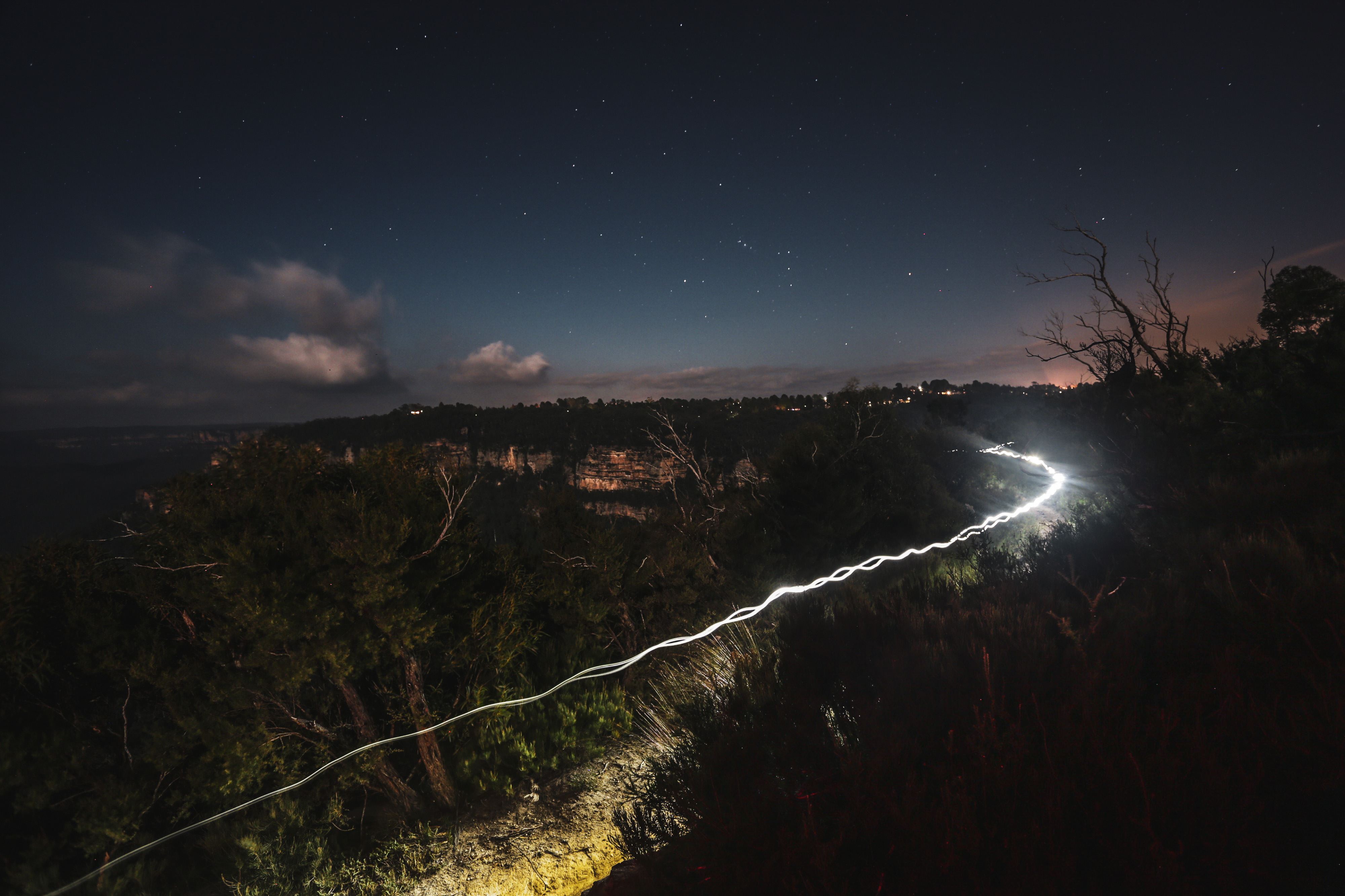
It’s a near mind-numbing trip of ups and downs, with two key descents at Lillians Bridge and Wentworth Falls before approaching close to the roads leading to Checkpoint 5.
I catch up with Manny, a Filipino runner and, as with some runners I met, strike a conversation with him. As we laugh at our willingness to endure our current predicament, Manny shares that he had to downgrade his initial goal of obtaining a silver buckle after determining he may not be fast enough to reach the finish line. Sensing that I’m picking up speed, he wishes me well before I proceed to take the lead.
A 2km portion of Tableland Road would be the final stretch prior to a right turn towards the checkpoint. I come face to face with a fleet of cars moving slowly on the opposite lane, with some honking in support as they drive past. Meanwhile, my eyes are feeling uncomfortable from fatigue, sweat and the blinding lights from the cars’ beam.
What a sight for sore eyes the big tent of Checkpoint 5 is with its tables of food and portable heaters. Finally here, I’m hungry and cold and in need of both of those things.
______________________________
AT 11pm and 78km later, it’s hard to feel any more energetic compared to the earlier part of the race. My stomach – not used to the spartan amount of food ingested over the last 15 hours – is uncomfortably processing the sandwich that I ate and it would not help much to be taking a bigger portion.
My legs are in a near battered state and the cold is intense at the vicinity of the checkpoint. Before the idea of surrendering to comfort gripes my mind, I decide to end my 15-minute break and leave the tent – I have slightly more than a half-marathon to eventually reach the finish line.
I move off on Kedumba Valley Road and into the twilight zone of the night. Unlike other races, UTA, with its more than 1,300 runners, is seldom a lonely race in darkness. Most folks would not be running with no company or no soul in sight for what feels like an hour. In this race, you will soon catch up with someone else (or be caught up) in less than 10 minutes or so.
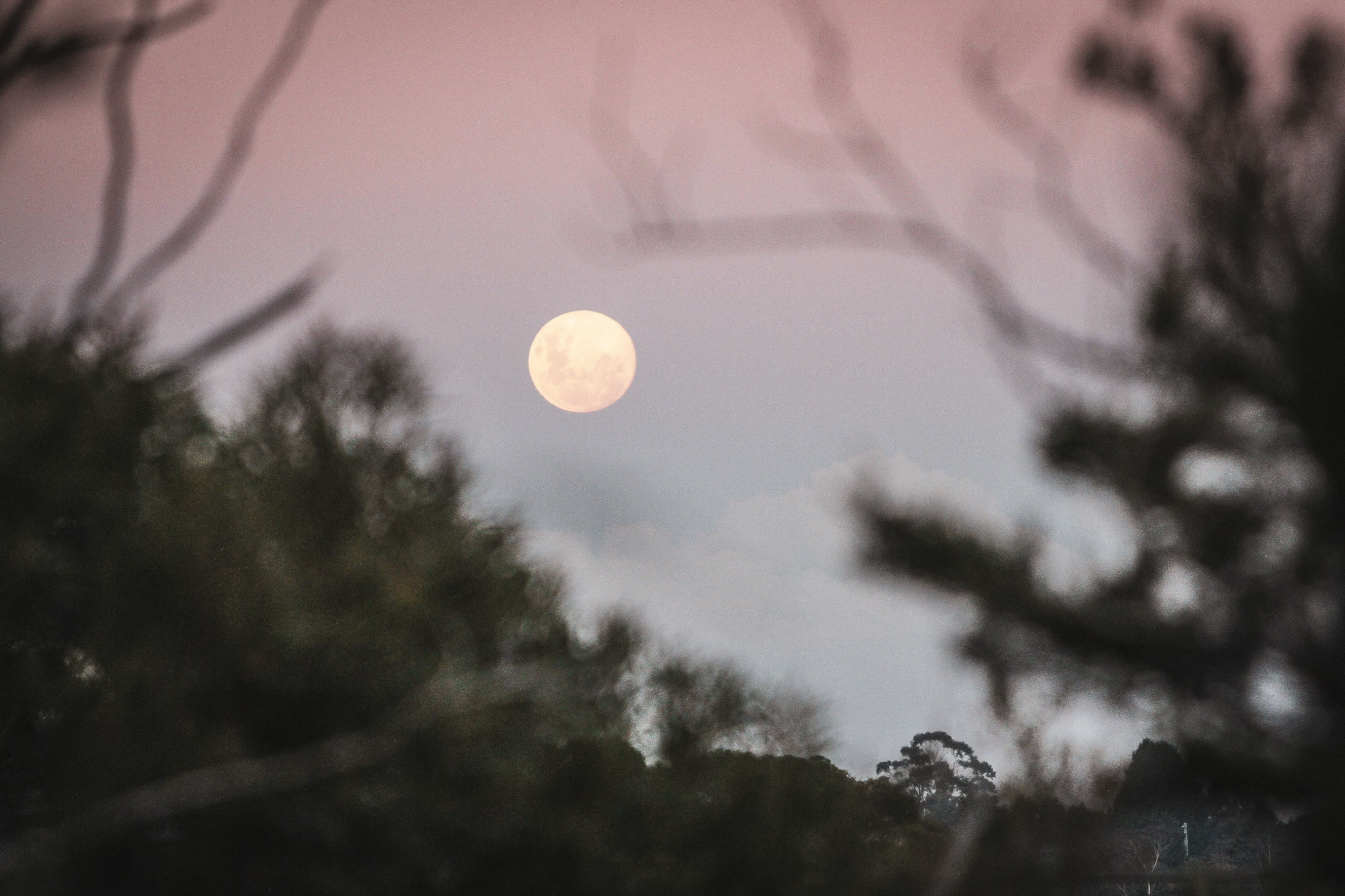
It’s now the going down part that kills – I descend carefully down a very long and steep dirt road, well aware that one sudden acceleration could have my calves seized in a merciless cramp.
And after that, a very steep ascent. There’s no way of going any faster and I’m getting rather irritated by the coughing of the runner who just overtook and is climbing much ahead of me.
A fatigue-induced crankiness aside, I have been doing some serious estimates since leaving Checkpoint 5. It’s a goal that I didn’t think was possible to achieve since my drastic energy drain in the afternoon: could I make it to the finish line at Scenic World in under 20 hours?
Departing from the last checkpoint, I would have close to five hours to complete 22km of the remaining distance. If I could push myself a little harder, I might just be able to finish this race a few minutes shy of the 20-hour mark.
In other words, the coveted UTA bronze buckle may still be within my reach.
How am I going to do that with all these quad-busting slopes, though?
______________________________
THE emergency aid station – a simple water-point at a saddle – is the final place of our respite before the end. With only 8.8km left from here, the single digit is but a minor relief. The UTA race course is not about to cede the rest of its territory without throwing in a slew of steep slopes and steps for the finale.
It’s one more long climb up the dirt road with its killer gradient after I left the aid station. This route would lead to the cliff lines of The Three Sisters rock formation and then take us to a part of the road which levels out. At last, walking normally or doing some form of running is possible from here.
Concerned that I may not have much time, I take advantage of the more leveled sections of the trail and start to transition to a slow run. Moving swifter than my pace in the past hour, I’m able to maintain the momentum until my gut is disturbed by a strong sensation of hunger. It’s not worth the risk to continue without food – even with the short distance left to tackle – so I lean by the trailside and consume an energy bar.
At this moment, the rush to make it to the finish in less than 20 hours has turned into a knife fight with time. I have now around 3km and less than 45 minutes to do it – a tight deadline in trail running terms.
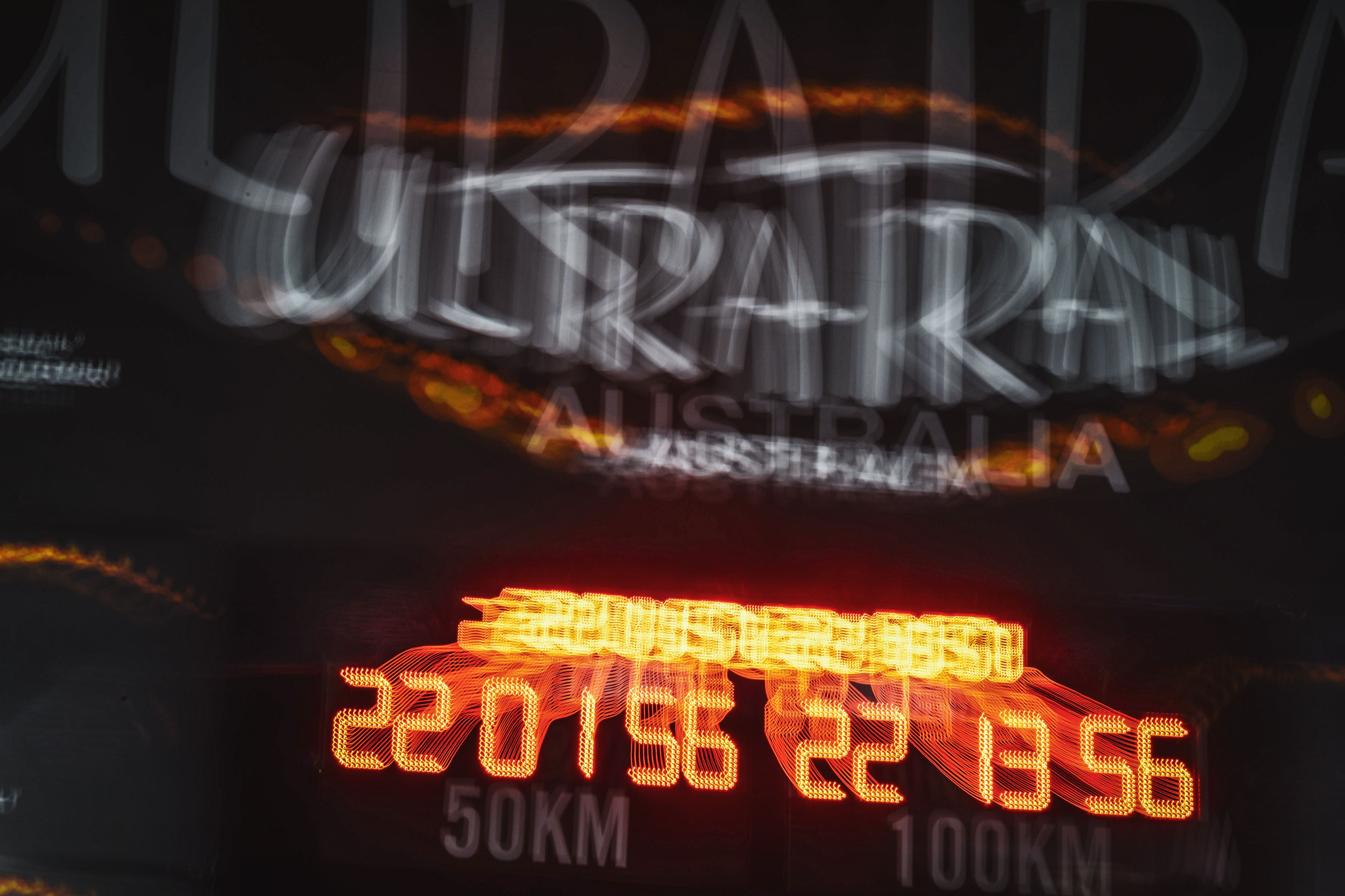
I scramble as fast as I could, becoming less mindful of tripping on the rugged terrain. In good time, I arrive at the last hurdle of the race: the slope at Furber Steps with its 951 steps and around 220m of elevation gain.
In the next 21 minutes or so, the race to the Scenic World facility at the top has transformed into a white-knuckle sprint over slightly less than a kilometer of uphill. One flight of steps is followed by another, culminating in a seemingly endless climb which only frustrates me further and threatens to break my pace apart.
I’m getting nearer but my mind appears to be playing tricks with me: have I done a kilometer more to the overall distance of 100km with all these dastardly steps?
I hold onto my momentum fiercely. My legs are increasingly strained. My anguish is rapidly building up. I’m surprised that I have not swear given the intensity.
And, then I catch sight of faint light on a concrete wall – the external perimeter of Scenic World. It’s now around 3.50am.
Turning around a corner, the sound of human chatters becomes more audible as the facility’s facade comes into view. Ahead lies the short lane to the finish line, and without a second thought, I launch into a blistering dash to the destination.
The run suddenly ends in a joyous collapse onto the ground, the concerned event volunteers surrounding and checking on me. They understand what had just happened, and though I did not glance clearly at the clock on the finish gantry as I passed through or have yet to look at my watch, I know I have done what I doubted could be possible. Somewhere deep within my subconsciousness, I know I would one day reflect and think this race is the best ultra-trail I ever ran.
As I receive a pouch containing the bronze buckle from a volunteer, my assumptions are confirmed: I finish Ultra-Trail Australia in 19 hours and 58 minutes that early morning.
